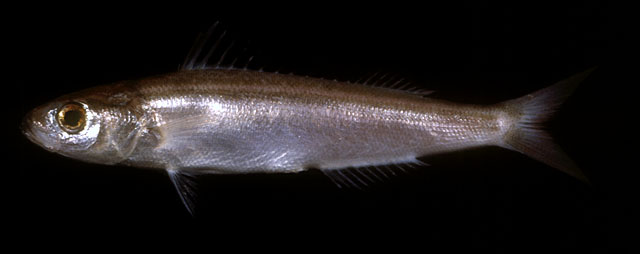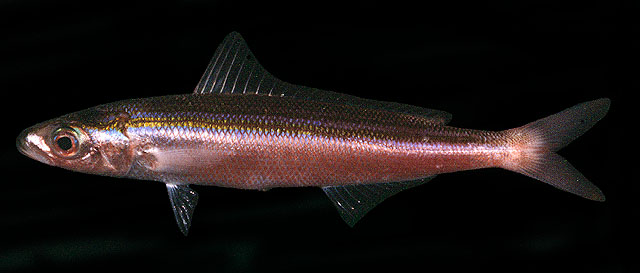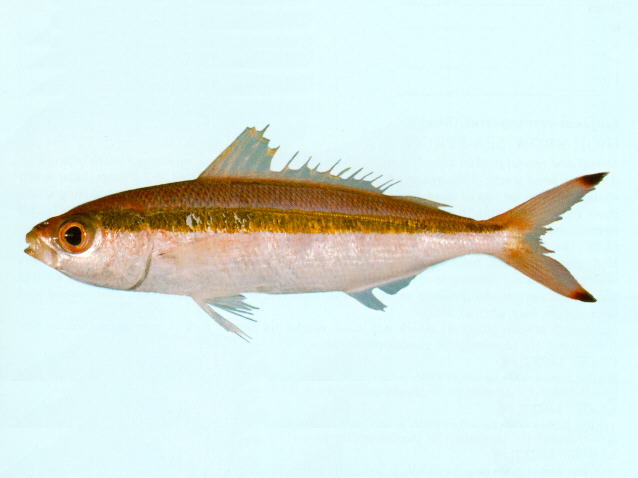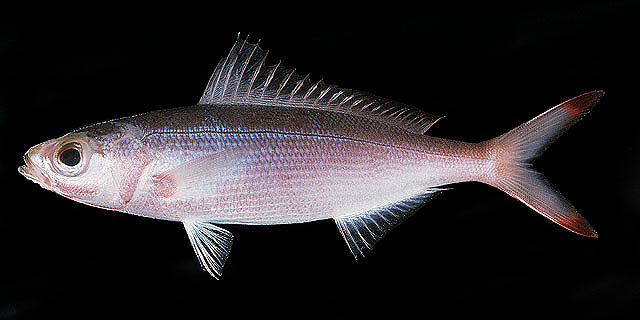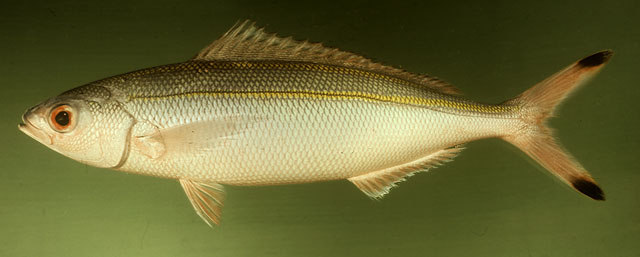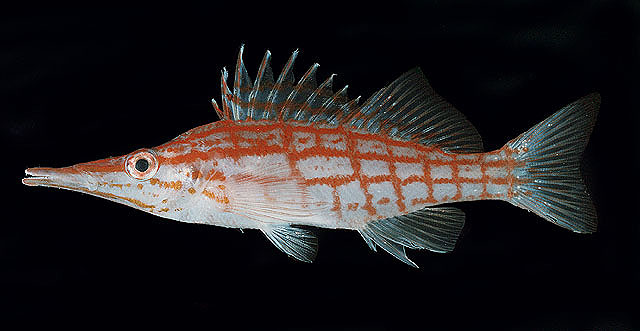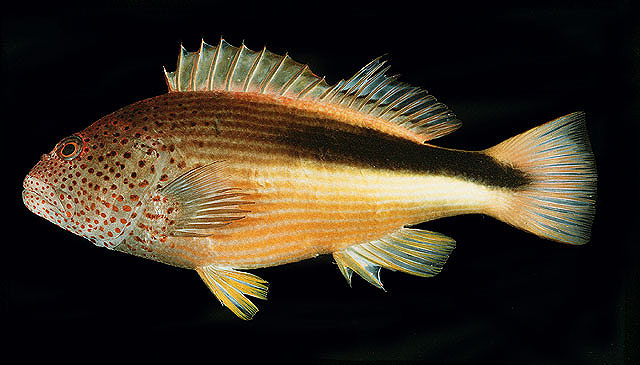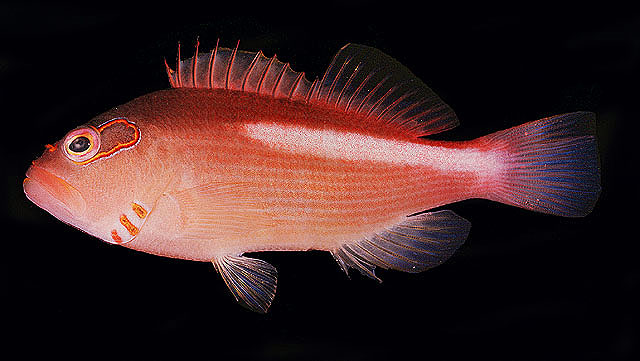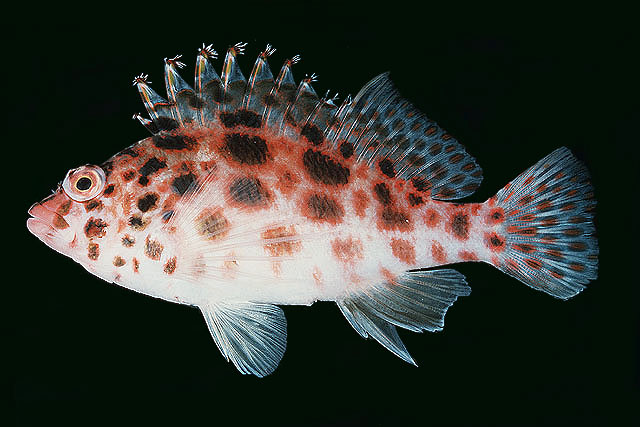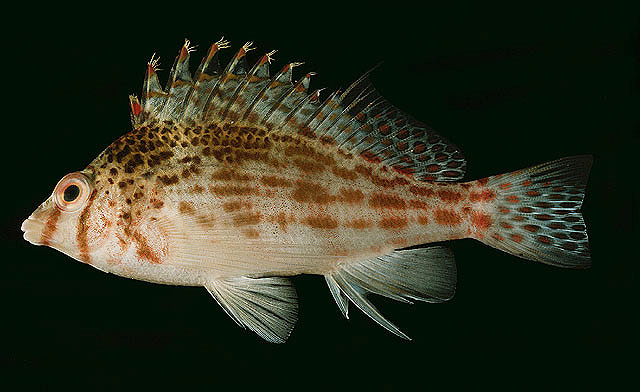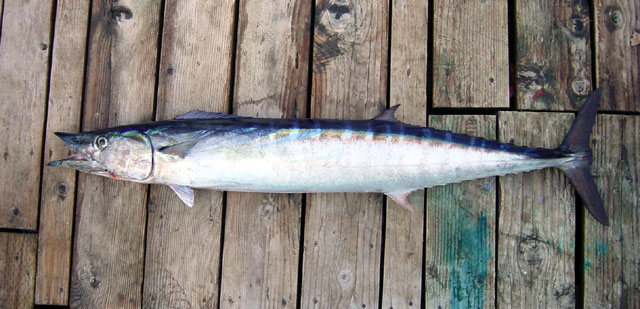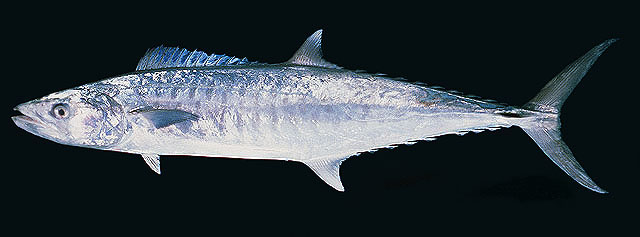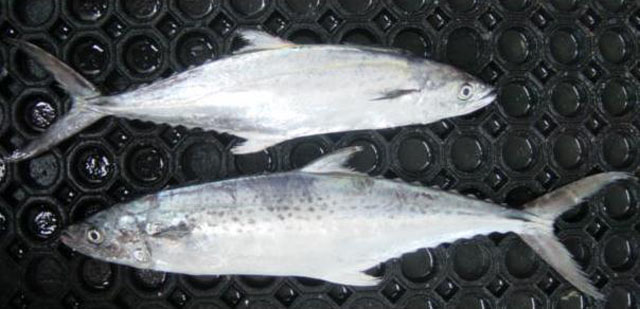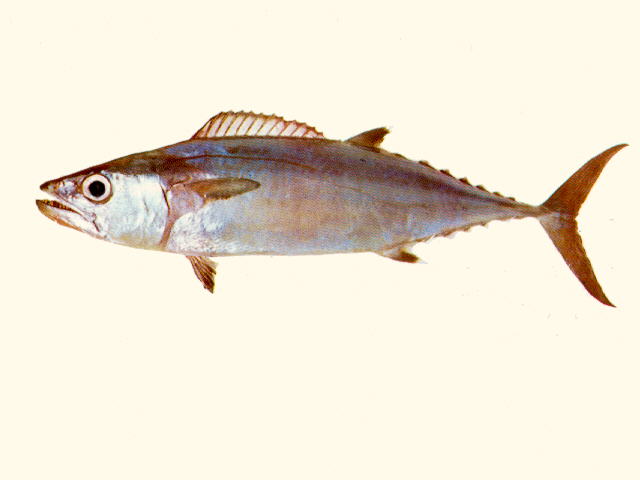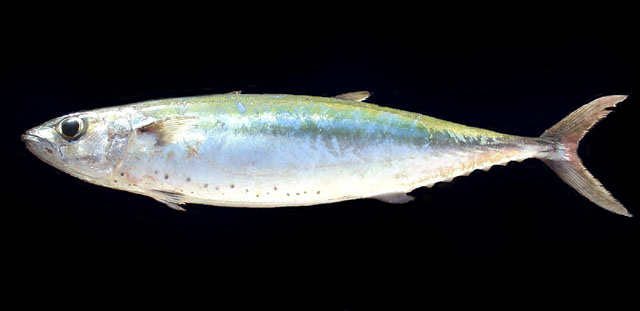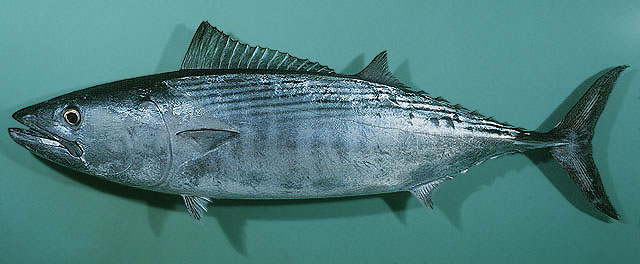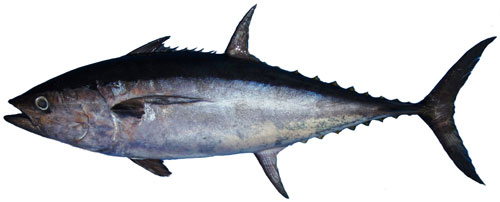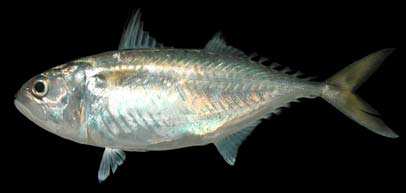ปลาเหยี่ยว
Distribution: tropical western and eastern Atlantic, Indian and Pacific (mainly Indo-Pacific). Continuous dorsal fin with 10 spines, 11-17 soft rays; interspinal membranes with cirri. Anal fin 5-7 soft rays. Scales ctenoid or cycloid. Vertebrae 26-28. Maximum length about 55 cm. Species usually small and very colorful; inhabits rocks and corals. Have many features in common with the scorpaenids. Feed on small crustaceans and fishes. Protogynous hermaphrodites, with few dominant males. Spawning takes place in open water near the surface. Adapt well to aquarium conditions.
ในไทยพบ 5ชนิด ทั่วโลกพบ 33 ชนิด
เพิ่มครับ วันก่อนกระทู้ทูน่า และ อินทรีหายไปครับ
วันก่อนบอกรายละเอียดเกริ่นนำไปแล้ว
Distribution: tropical and subtropical seas. Body elongate and fusiform, moderately compressed in some genera. Snout pointed, premaxilla beaklike, free from nasal bones which are separated by the ethmoid bone; mouth large; teeth in jaws strong, moderate, or weak; no true canines; palate and tongue may bear teeth. The 2 dorsal fins separate and depressible into grooves with 5-12 finlets behind second dorsal and anal fins; first dorsal fin with 9-27 rays, origin well behind the head. Pectoral fins high on body. Pelvic fins moderate or small with 6 fin rays, placed below the pectoral fins. Caudal fin deeply forked with supporting caudal rays completely covering hypural plate. At least 2 small keels on each side of caudal fin base, a larger keel in between on caudal peduncle in more advanced species. Lateral line simple. Vertebrae 31-66. Body covered with small to moderate scales or a scaly corselet developed (area behind head and around pectoral fins covered with large thick scales) and rest of body naked or covered with tiny scales. Gill membranes not united to isthmus. Thunnus and close relatives with a specialized vascular system for heat exchange; the evolution of this and related adaptations for endothermy are discussed in Block et al. 1993 (Ref. 11221). Primarily swift, epipelagic predators; some species occur in coastal waters, others far from shore. Mackerels (Scomber and Rastrelliger) filter plankton with their long gill rakers. Spanish mackerels, bonitos and tunas feed on larger prey, including small fishes, crustaceans and squids. The main predators of smaller scombrids are other predacious fishes, particularly large tunas and billfises. Dioecious and most display little or no sexual dimorphism in structure or color pattern. Females of many species attain larger sizes than maels. Batch spawning of most species takes place in tropical and subtropical waters, frequently inshore. Eggs are pelagic and hatch into planktonic larvae. Among the most important of commercial and sport fishes. [Thunninae=ISSCAAP 36; Scombrinae=ISSCAAP 37]. Also Ref. 50681. According to the recent phylogenies (Ref. 58009), two subfamilies can be recognized: - Gasterochismatinae with one species Gasterochisma melampus. - Scombrinae: divided currently in four tribes (Ref. 58010), only Scombrini are supported by molecular data; more research is needed for Scomberomorini, Sardini, and Thunnini.
ทั่วโลกพบ 50 ชนิด ในไทยพบ 15 ชนิด
ได้แก่

